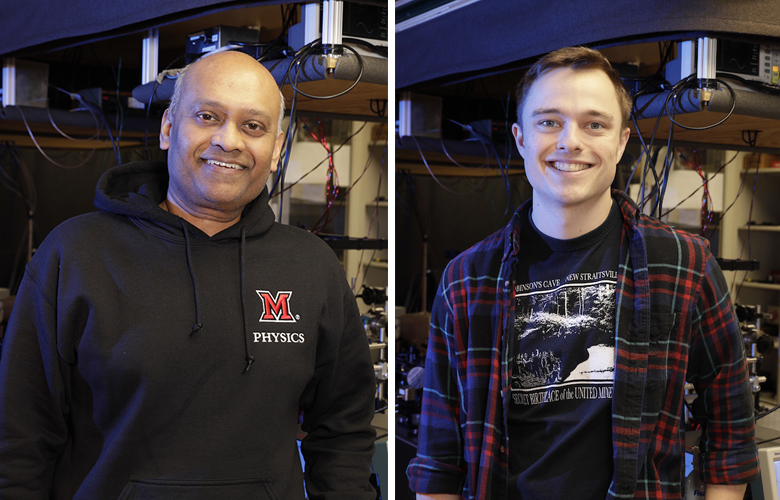
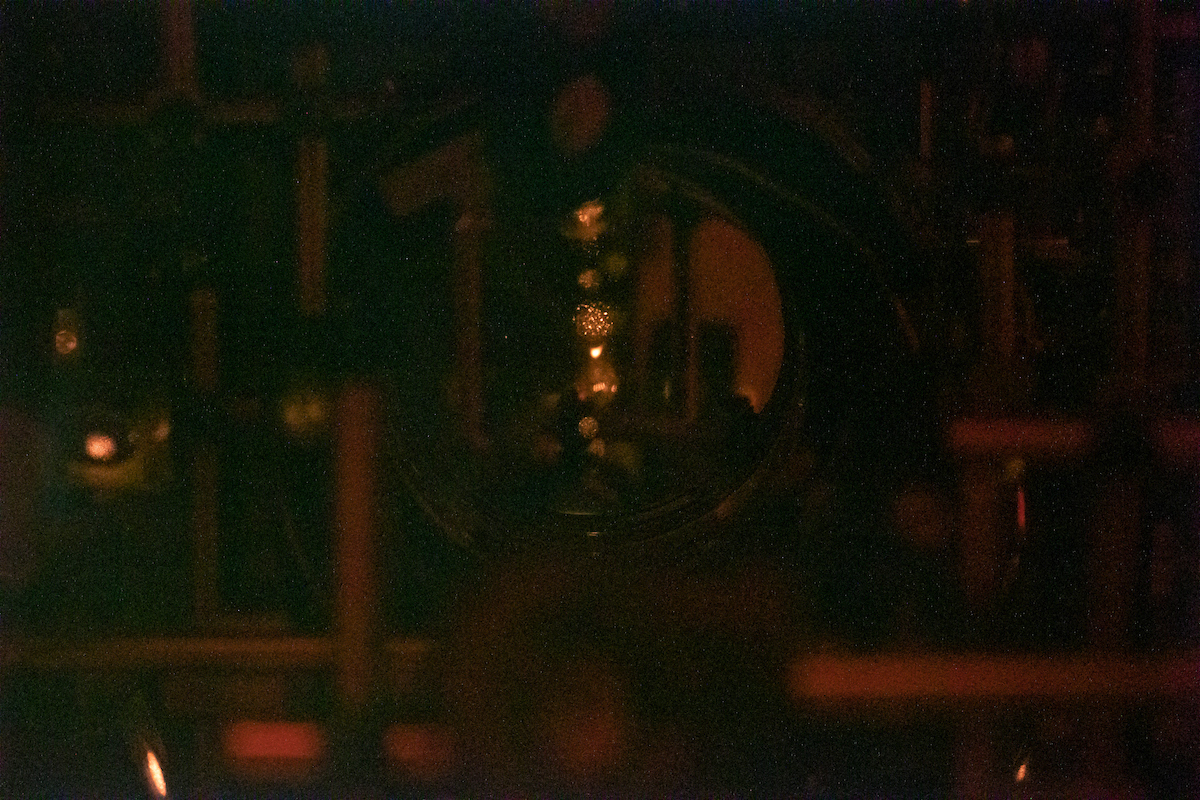
Researchers explore the mysteries of quantum physics with ultracold matter
Why does quantum physics matter?
By Alicia Auhagen ’16, university marketing and creative services
On a series of floating tables in physics professor Samir Bali’s lab, you’ll find a complex matrix of lenses, mirrors and fibers. But the real magic is what you can’t see.
Such is the nature of working with atoms and infrared laser beams, neither of which can be seen with the naked eye.
Alex Staron, a physics graduate student, gestures emphatically to the invisible beams. “I swear there are lasers here.”
Sure, they get a little jealous of labs that work in the visible with gorgeous technicolor beams. But ask Bali what his favorite color is and he will proudly tell you infrared.
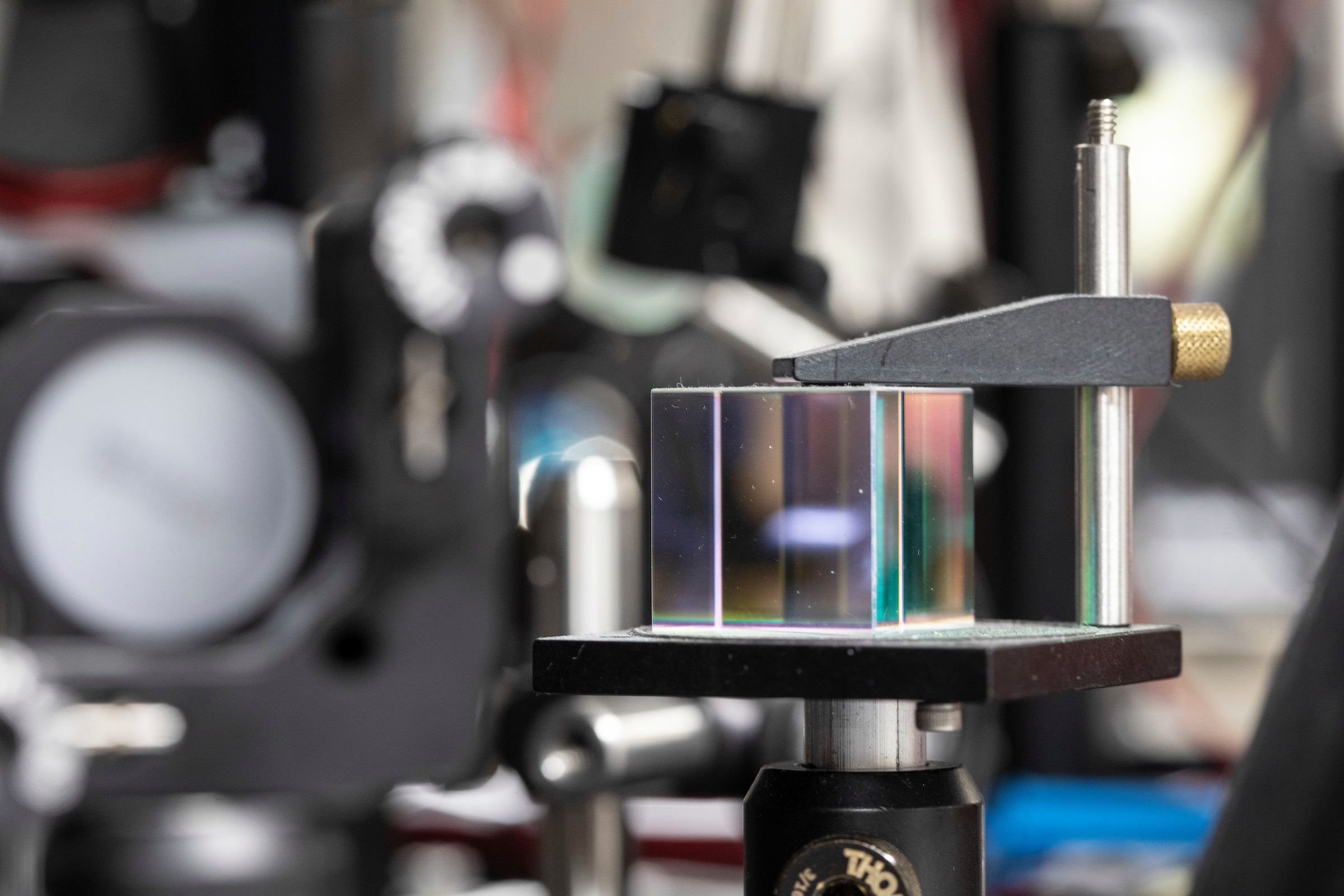
A close-up view of the Bali lab's home engineered system.
Optical molasses

Samir Bali, physics professor (left), and Alex Staron, graduate student (right)
Bali and his student researchers are exploring the properties of ultracold rubidium atoms – some of the coldest matter in the universe.
Standing in Bali’s Kreger Hall lab, Staron explains, we’re closer to the temperature of the sun’s surface than we are to the cold atoms. Even liquid helium and cryogenic chambers are hotter than these rubidium atoms.
When atoms get cold, they move slowly, which makes them easier to observe when magnified. Light from the lasers is used to trap the cold atoms in an optical lattice. Think of an optical lattice like a Rubik’s cube with atoms in many, but not all, of the corners, Staron says. Once trapped in the lattice, the atoms cool to about 10 millionths of a degree above absolute zero. By adjusting the frequencies, polarization and laser intensities, the team can see how the atoms behave in various conditions.
Twists and turns
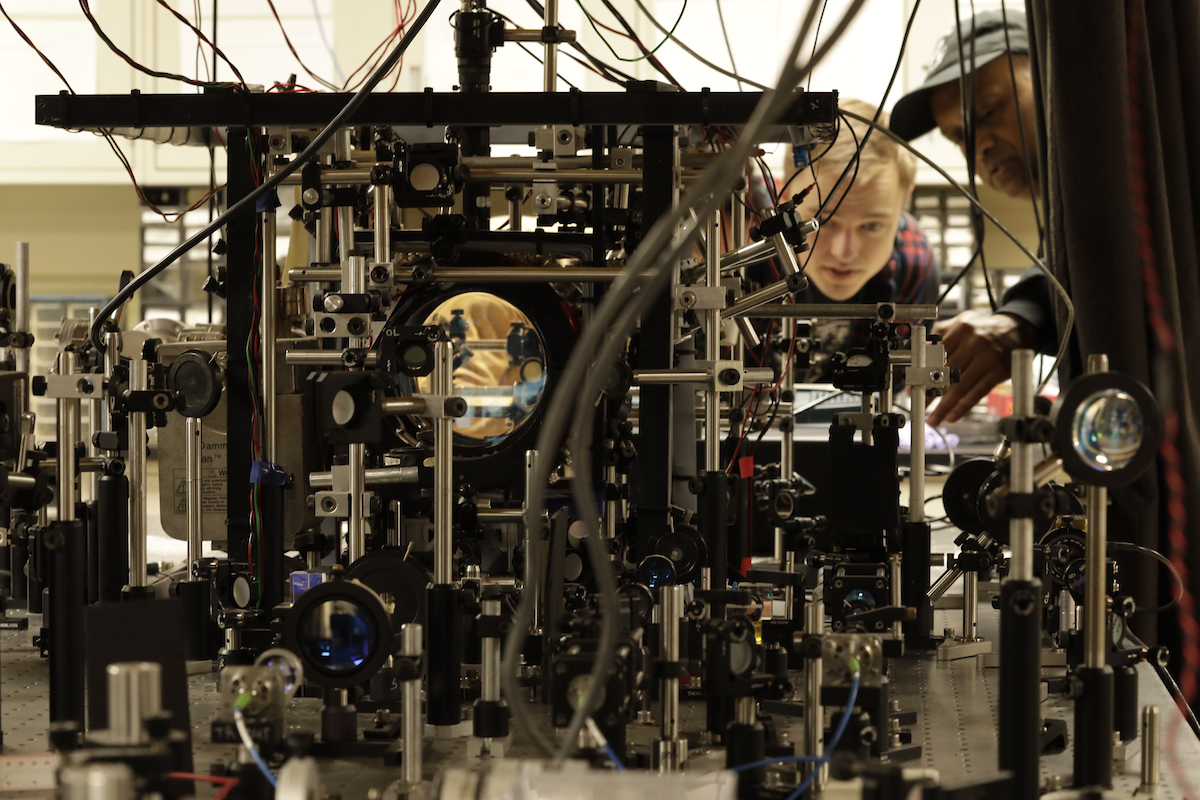
Staron (left) and Bali (right) discuss adjustments to their setup.
In the summer of 2019, the Bali lab was using cold matter to try to understand a paradox of the human body: Two motor proteins, myosin and kinesin, somehow harness the energy in the random, “noisy” motion of surrounding water molecules to efficiently create directed motion for themselves. Biophysicists are attempting to develop man-made medical nanotechnology that mimics this behavior, but the efficiency gap is astronomical.
Bali believes random noise may play a role in the proteins’ ability to perform efficiently. This phenomenon, called stochastic resonance, occurs when a weak frequency is amplified by arbitrarily adding other frequencies.
“Some days, you're banging your head against the wall trying the same thing over and over and it doesn't work. And then you try something slightly different and it works. There are all kinds of examples like that where you really have to put in the time.
-- Alex Staron
Nature has a several million-year head start, and after months of testing, Bali’s research team concluded that their current setup won’t get them close enough to the transport efficiencies of our body’s motor proteins. But they’re not deterred.
“It’s still an interesting physics problem,” Staron said. “We want to understand this phenomenon of taking something inherently random and getting something directed out of it.”
Now, they’re investigating quantum stochastic resonance. It’s similar to classical stochastic resonance in that a signal is amplified through the addition of random noise. However, this noise is thought to be intrinsic in quantum systems rather than coming from the surrounding environment.
They hope to observe this phenomenon as a means toward more efficient directed motion of their atoms. This could lead to monumental improvements in the efficiency of nanomachine technology.
Revel in the mystery
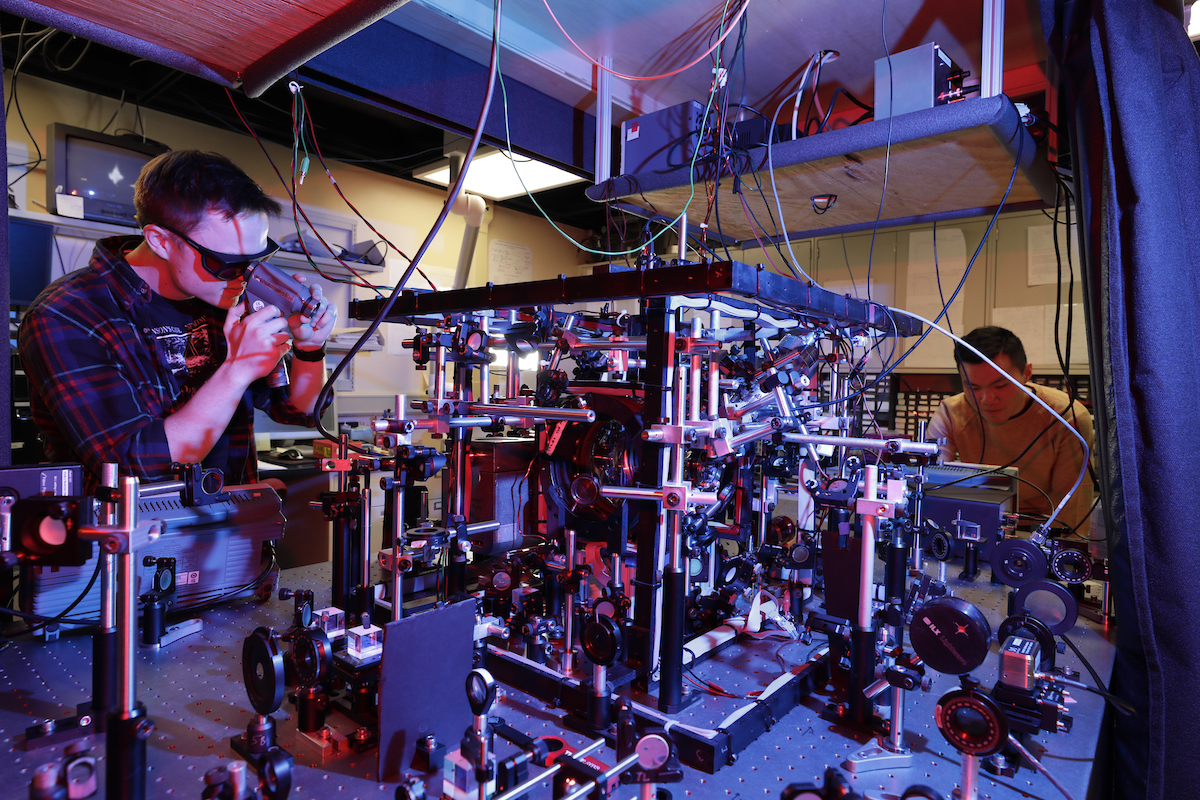
Staron (left), and Kefeng Jiang (right) – both graduate students who completed undergraduate physics degrees at Miami -- check laser alignments. The cold trapped cloud of atoms is magnified on the TV screen behind Staron.
Both undergraduate and graduate researchers play a key role in constructing the setup. Physicists, Bali explains, are always building things because the industry cannot cater to their needs.
This home engineering adds an extra layer of complexity. Often, the students must spend months testing a system they built to determine how it works before designing experiments around their research questions. And when something goes wrong, there’s no instruction manual for how to fix it.
“Watching [students] develop into creative and productive scientists rekindles my own passion for doing cutting-edge physics research.
-- Samir Bali
Getting undergraduates involved in the research early is critical not only for the advancement of the project, but for the development of the student. Graduate and doctoral level physics programs want to see that a student researcher can take the lead and solve problems. Staron, who completed his undergraduate physics degree at Miami in 2017, appreciates the lessons and opportunities undergraduate research afforded him in taking his education to the next level.
“Every day is a roadblock, but in a good way. It’s really gratifying when it works.”
For Bali, this is exactly what makes the pursuit of knowledge so awe-inspiring. He still vividly recalls the sights and sounds of the first physics lab he set foot in at the age of 19, from the red, green and orange lasers to the quiet humming of vacuum pumps.
“I remember feeling this powerful sense of intrigue,” he said. “All I wanted was to not be left out of this deep, never-ending adventure to find out what makes the universe tick.”
He enjoys re-creating those moments by reliving them with his students.
